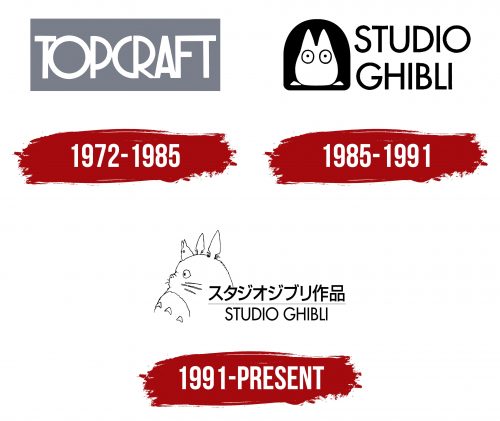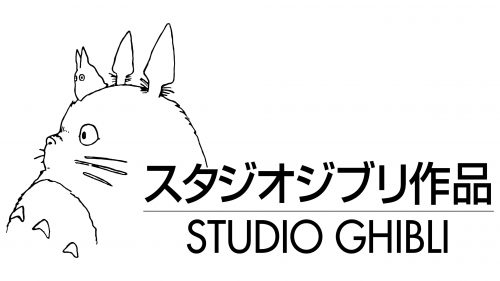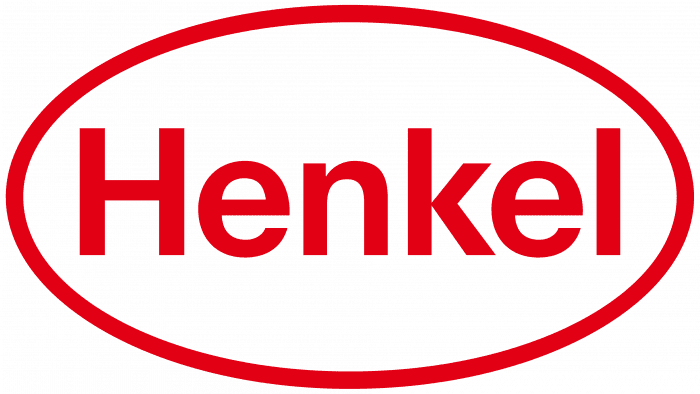The Studio Ghibli logo is incredibly creative and delicate, like a fresh breeze in Japanese animation. It inspires and evokes empathy for the characters in Hayao Miyazaki’s famous films. The emblem exudes a sense of spirituality and sentimentality, skillfully touching the delicate strings of the soul.
Studio Ghibli: Brand overview
Tokyo, Japan, hosted the founding of Studio Ghibli on June 15, 1985. The studio was founded by three important figures in Japanese animation: producer Toshio Suzuki and directors Hayao Miyazaki and Isao Takahata. Following the success of Miyazaki’s 1984 film “Nausicaä of the Valley of the Wind” for Tokuma Shoten, they decided to open their animation studio.
Miyazaki suggested the name Ghibli. The word originates in Italian and describes a scorching breeze blowing across the Sahara. Miyazaki wished the animation studio could “blow a new wind” in the field.
The first project for the firm was the Hayao Miyazaki-directed picture “Castle in the Sky” (1986). With its thrilling story, painstakingly created environment, and breathtaking animation, this movie raised the bar for the studio’s subsequent productions.
Two classic movies from the studio were released in 1988: “My Neighbor Totoro” by Hayao Miyazaki and “Grave of the Fireflies” by Isao Takahata. “Grave of the Fireflies,” an animated picture that explores anti-war sentiment, is based on a semi-autobiographical novel by Akiyuki Nosaka. It has gained immense emotional resonance. On the other hand, the film “My Neighbor Totoro” presented one of the most well-known characters from the studio and came to represent the brand.
With the release of “Kiki’s Delivery Service” in 1989, the animation firm solidified its reputation for producing high-caliber works with compelling narratives and lively characters.
Isao Takahata’s “Pom Poko,” which tackled traditional Japanese folklore and ecological themes, was released in 1991. “Porco Rosso,” a fable about a pig pilot set in interwar Italy, was released by Miyazaki in the same year.
In 1994, the studio opened a museum in Mitaka, Tokyo. In addition to showcasing studio film exhibits, the museum functioned as a creative hub that embodied the company’s ethos.
The animation studio experienced major growth in 1997 following the release of Miyazaki’s “Princess Mononoke.” This epic film, which delved into the conflict between human civilization and nature, became the highest-grossing film in Japan at the time and earned the studio international recognition.
Miyazaki’s “Spirited Away,” which the firm debuted in 2001, was a critical and commercial hit and won the studio its first Academy Award for Best Animated Feature in 2003.
“Howl’s Moving Castle,” Miyazaki’s rough adaptation of Diana Wynne Jones’s novel, was released in 2004. The movie carried on the legacy of building imaginative and compelling worlds.
“Tales from Earthsea,” based on the Ursula K. Le Guin book series, marked the directorial debut of Hayao Miyazaki’s son Goro in 2006.
The release of Hayao Miyazaki’s Ponyo in 2008 proved that the studio could produce fantastical tales for viewers of all ages.
Following the publication of “The Wind Rises,” a biographical film about the Japanese fighter jet inventor during World War II, Hayao Miyazaki announced his retirement from animation in 2013. However, he returned to work on a new project in 2017.
The studio announced in 2018 the creation of Hayao Miyazaki’s upcoming feature-length animated film, “How Do You Live?” Kimitachi wa Dō Ikiru ka (原題㼚君たちはどう生きるか). This choice was very important given that Miyazaki had already declared his retirement. Based on Genzaburo Yoshino’s 1937 novel, the film is a major endeavor that Miyazaki is putting extra effort into.
The company declared in 2019 that it would establish a theme park in Japan’s Aichi Prefecture. The park’s imaginative design will help fans of the films fully immerse themselves in the world of their beloved animated pictures.
2020 was a pivotal year for fans worldwide. The studio signed a deal with Netflix, allowing the company’s back catalog to be streamed in countries outside the US and Japan. This decision made the studio’s classic works more accessible globally.
Directed by Hayao Miyazaki’s son Goro, “Earwig and the Witch” (アーヤと魔女, Āya to Majo) was the studio’s first computer-animated movie, which debuted in 2021. Based on Diana Wynne Jones’ book, the movie marks a turning point in the company’s growth, which has historically focused on hand-drawn animation.
The first section of the theme park opened its doors in 2022. It featured multiple themed zones, each dedicated to a different studio release. This event marked a major step in expanding the brand’s cultural influence and attracted animation enthusiasts worldwide.
The filmmakers of the movie “How Do You Live?” believe it to be one of the most ambitious projects in the studio’s history, and in 2023, the company continued working on it. At the same time, the studio started working on several short films for its Tokyo museum, continuing the custom of producing unique content just for this location.
Meaning and History
What is Studio Ghibli?
It is a famous Japanese animation film studio known for producing animated films. Its founders are directors Hayao Miyazaki and Isao Takahata, as well as producer Toshio Suzuki. The studio is known for its superb animation, compelling story, and elaborate characters. The studio’s best-known films include My Neighbor Totoro, Duhless Away, Princess Mononoke, and Howl’s Moving Castle. The studio has received international recognition and numerous awards, establishing itself as a leading force in animation.
1972 – 1985
The predecessor to Studio Ghibli, Topcraft, had a straightforward logo. It was more practical than creative. The design was a classic combination of text and graphics, focusing on optimal readability across various media. This was achieved through the contrast between the background and the text, colored in gray and white, respectively. This combination didn’t evoke strong emotions; instead, it calmed and reassured, setting the tone for a serious appreciation of animated works.
The core element of the emblem is a rectangle. It’s wide, horizontal, and neutral, making it an ideal background that doesn’t draw attention away but instead focuses the viewer’s gaze on the most important part—the name. The light letters stand out well against the dark background.
The font used for the inscription is simple—light, smooth, and even. The tall letters occupy almost the entire inner space of the rectangle. They are thin and elegant, creating a sense of precision, with each edge and curve crafted perfectly. Despite the simplicity of the typeface, the arrangement of the text is quite complex, resembling a multi-structured design. This is due to the interconnected text: all the glyphs have points of contact.
The geometric symbols seem to flow into one another, forming the desired shapes. This approach likely conceals a touch of animation magic. The letters appear formal yet impart a sense of wonder and positive energy. They resemble hieroglyphs, behind whose complexity lies an expansive world full of harmony and meaning. In other words, the Studio Ghibli logo serves as a portal into the universe of modern Japanese animation.
1985 – 1991
After reorganizing the animation studio Topcraft, which split into several parts, its old logo ceased to exist, giving way to a more creative emblem. The famous director Hayao Miyazaki and his colleagues acquired one of the divisions, making the most iconic figure from his work the central element of the visual identity.
This secondary character is easily recognizable by its silhouette: a tiny creature depicted front-facing with tall, pointed ears. It sits and gazes intently ahead with wide-open eyes. The outline of this creature resembles several characters from the world of the Japanese animator:
- A small spirit companion of the large forest guardian from the film “My Neighbor Totoro.”
- The talking cat from the feature-length animated film “Kiki’s Delivery Service.”
In this case, the prototype was the smallest forest spirit created by Miyazaki—Chibi Totoro. The film portrays it as a white “fluffball” with tall ears. According to IGN statistics, this figure ranks among the top 25 best anime characters. As noted by the Japanese director, this creature (the youngest) is 109 years old.
The forest spirit’s background is a black hole resembling an entrance. The cute character looks forward, and next to it is the name of the animation company. The name is split into two levels to match the height of the drawing, thereby maintaining harmonious proportions. The inscription is rendered in a thin, grotesque font. The font combines both rounded and angular elements, achieving a perfect balance.
Although the letters are black, they convey a sense of lightness, simplicity, and positivity. This effect is supported by the light background, which contrasts with the dark entrance on the left. Interestingly, “ghibli” is not Japanese; it is the Libyan name for a wind blowing from the southeast (sirocco). In this context, Hayao Miyazaki infused it with the concept of rejuvenating the animation industry—a “breath of fresh air in animation.” This idea fits perfectly with the creative ethos of the Japanese studio.
1991 – today
The transformation of the Studio Ghibli logo is closely tied to the artistic evolution of the animation company. After the massive success of the film *My Neighbor Totoro,* its characters became globally recognizable, naturally boosting the studio’s visibility behind the anime. As a result, the studio updated its visual identity by choosing its most popular and iconic character—Totoro, the forest guardian created by Miyazaki.
King Totoro, as the character is called, is depicted in profile. He is turned to the left, looking straight ahead. According to legend, this creature is the oldest of the three forms:
- He is 1,302 years old.
- The middle form, Chu Totoro, is 679 years old.
- The youngest, Chibi Totoro, is 109 years old.
On the head of the large forest guardian sits the smallest spirit helper, gazing intently forward. Two tall mushrooms grow behind him, replacing King Totoro’s ears.
The illustration has a fine contour line harmonizing with the nearby inscriptions. One is in Japanese (at the top), and the other is in English (at the bottom). The designers retained the previous font style—grotesque, elegant, capitalized, with a perfect balance of angles and curves. This matches the film company’s concept of a fresh breeze in the animation industry, evoking a sense of lightness and airiness. This effect is further enhanced by the wide spaces within the letters and the narrow strokes.
The first and second lines are separated by a barely visible stripe that adds balance to the logo, visually uniting the text and the image. The characters are also soft, flowing, and elegant, reminiscent of the beloved animated characters. The emblem is rendered in black and white—colors that symbolize elegance, mystery, seriousness, purity, sincerity, and openness, harmoniously representing the concept of the Japanese animation studio. Essentially, the logo reflects playful imagination and professional simplicity.








